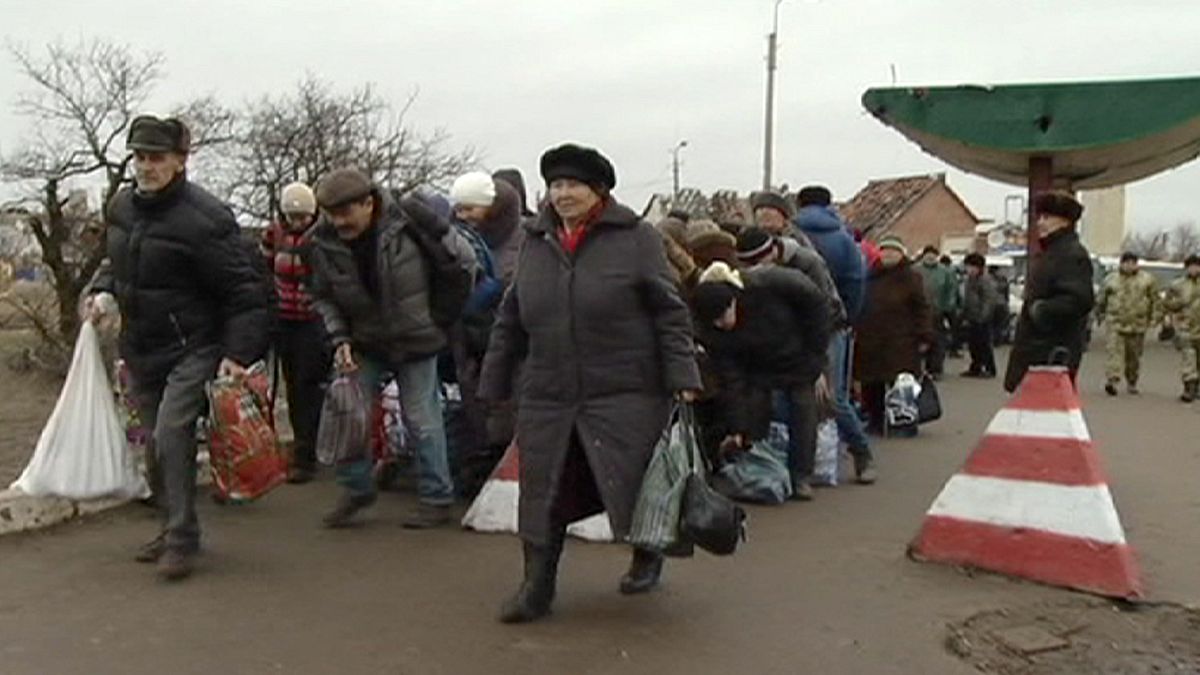No jobs. Little left standing. A long wait to cross a frontier made by a war few Ukrainian farmers understand, and which cuts them off from their market...if they could grow anything. Near Luhansk, li
Once a village, Stanitsa Luhanska became an outlying city district of Luhansk and home to 15,000 before the war.
Today it is totally destroyed, and just 100 metres from the contact line between Ukraine and the territory wrenched from Kyiv by pro-Russian forces in 2014.
It is one of the main crossing points between Ukraine and the self-styled Luhansk Peoples’ Republic for divided families, and those doing business.
“We want to know when this mess will be over, Ukraine is here and Ukraine is there, we want to know why they have been cut apart. Why do we have to go through this check point with Ukrainian passports? I am Ukrainian, my children are Ukrainians and they are not guilty of letting some terrorists grab power here. The Ukrainian army should go and free us from those terrorists!” said an elderly lady making the journey regularly to see her daughter who lives and works in the city.
An hour’s wait at the border each way in the Siberian wind before crossing the Siverskiy Donets river bridge makes this an even more miserable journey. Ukraine’s State Emergency Service has sent up a tented village to serve coffee and provide shelter during the process.
Those whose farms have survived or whose fields have not been mined bring bags of vegetables. The once-mighty agriculture sector is all but dead, distribution and production facilities wrecked, but prices in the LPR are two-thirds higher than in Ukraine. It is a strong incentive that trumps a little extra suffering for farmers who have already lost everything.
“We were tomato and cucumber growers, that was our income. We sold them in Luhansk. That was our major market, but we also sold elsewhere. But now we cannot grow anymore, we cannot sell anymore and we cannot live here anymore, so we moved to our daughter’s place,” said one woman.
Others cross from the LPR to collect Ukrainian pensions, as Ukraine stopped trying to pay them in occupied territory last year.
The UNHCR is repairing the saveable damaged buildings. Actual reconstruction has begun, but further away from the frontline. Here the risk of renewed fighting is still too high.
“Pilot projects were carried out primarily in Lysychansk because these were homes that were on the former front line, so conditions really permit the work to be carried out, there are no security issues. For this year the former front line continues to be probably the priority for reconstruction. But it’s only a matter of time until rebuilding has to reach the frontline as well,” said UNHCR Field Officer Jeff Wilkinson.
The UNHCR provides the bricks, glass, cement, timber, nails and roofing; the
Norwegian Refugees Council makes sure it gets to the right place at the right time, no mean feat on Ukraine’s challenging and attritional road network.
